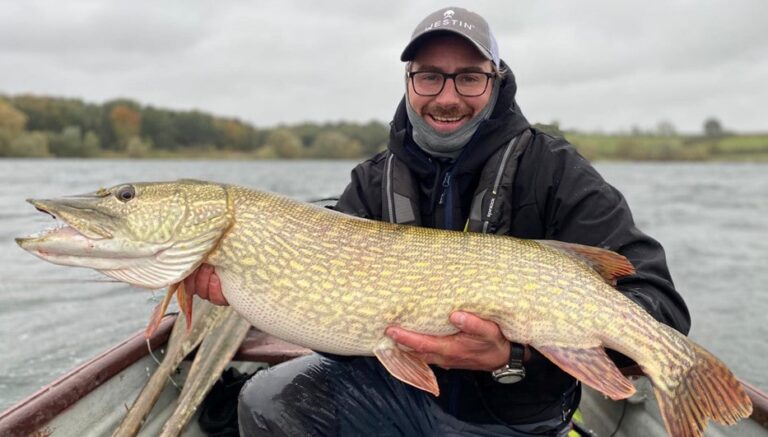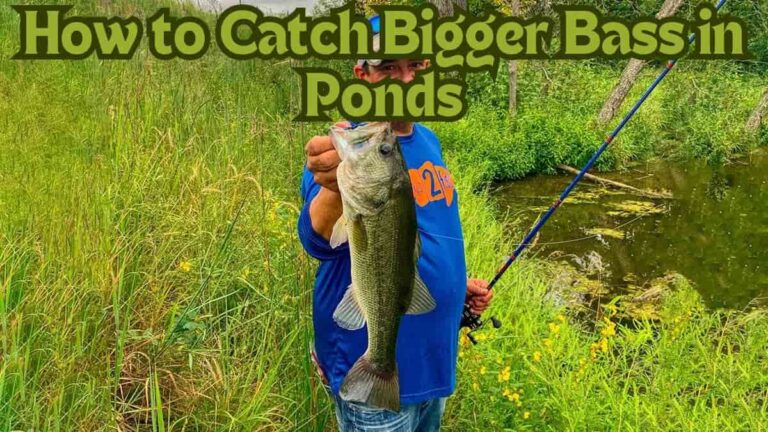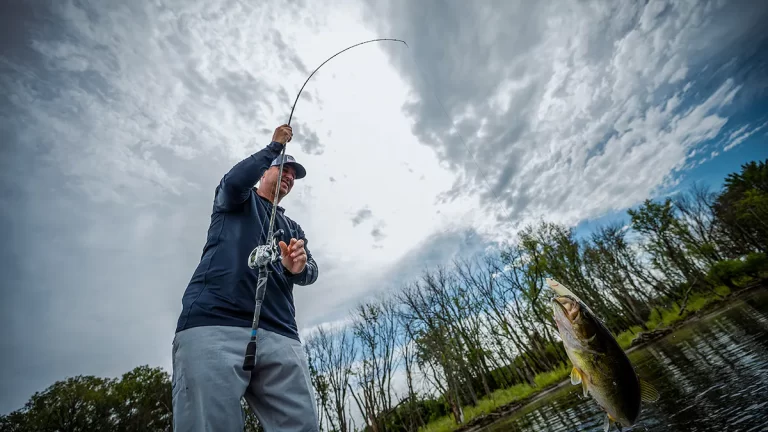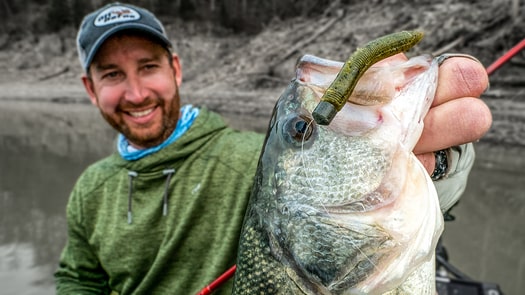Micro Jig Fishing for Bass

Micro jigs seem to gain more and more popularity every year. Not only are they incredibly effective, but the allow you to use a jig on a spinning setup.
Plus, they look absolutely awesome. But of course, you still need to know how to maximize your micro jig fishing success.
What are Micro Jigs?
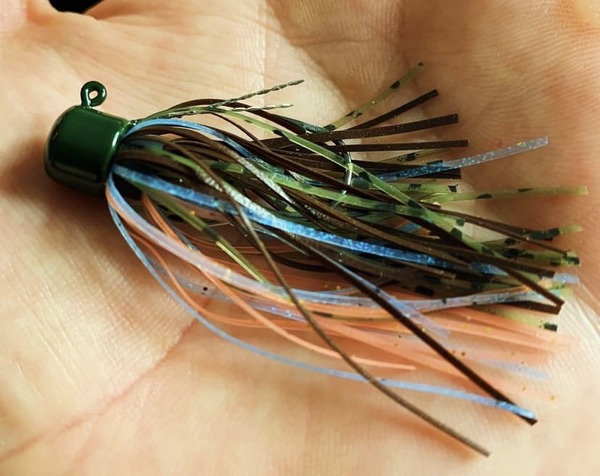
As the name implies, micro jigs are much smaller, ultra finesse versions of the standard bass jig.
The are much lighter, have very small, light hooks, and a much thinner, less invasive weed guard.
Typically weighing between 1/16 oz and 1/4 oz, micro jigs take the advantages or the bass jig and compact into a finesse profile.
How to Think About Micro Jigs
Think of micro jigs as a mix between the Ned rig and the bass jig. Or, simply as a skirted, weedless Ned rig.
For the most part, you are going to fish micro bass jigs in the same situations that you would a Ned rig.
Advantages of Micro Jig Fishing
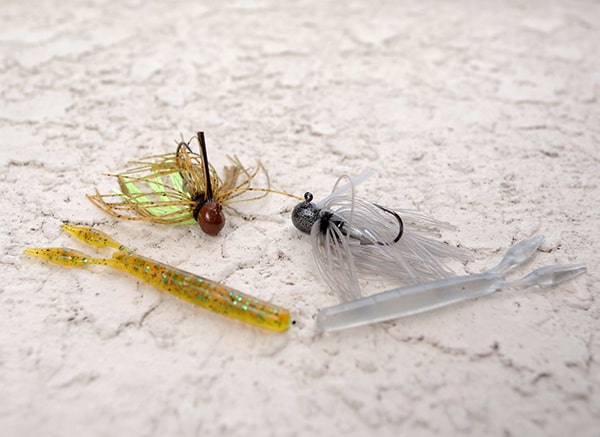
Weedless
Although you can make the Ned rig weedless, those setups tend to diminish the presentation of the Ned rig.
I’m not sure if that actually reduces how many bites you get, but I personally prefer the look of a micro jig over a weedless ned rig.
A Bit Bigger Bass
One of the biggest advantages of bass jigs in general is that they tend to catch bigger bass.
The added bulk and flair of the jig skirt can persuade bigger bass to bite.
Although, I’ve caught plenty of big bass on the standard Ned rig and other small baits. But the average bass size will be a bit bigger with a micro jig.
Secondary Movement
Secondary movement is when a lure has a bit of action without you, the angler, imparting that action.
Jigs have this secondary movement. Even when they are sitting still on the bottom, the skirt is swaying, flickering, and undulating a little bit.
When a bass noses down on the jig, that secondary motion looks very natural, and often triggers them to bite.
When to Use Micro Bass Jigs
Pressured Water
When a lake or pond has a lot of fishing pressure from other anglers, finesse is often the way to go.
Downsize your lures and line. Choose more realistic and subtle baits.
A micro jig is a lighter, smaller, more realistic version of the jigs that most guys are throwing.
This presentation will clean up the bass that other guys just can’t catch.
Winter
The Ned rig is probably the most popular wintertime bass rig.
A finesse bait on the bottom is nearly impossible to beat in cold water when bass don’t want to move much.
I have found that the secondary movement, paired with the slightly bigger profile of micro jigs can not only catch more bass, but also bigger bass.
Smallmouth Fisheries
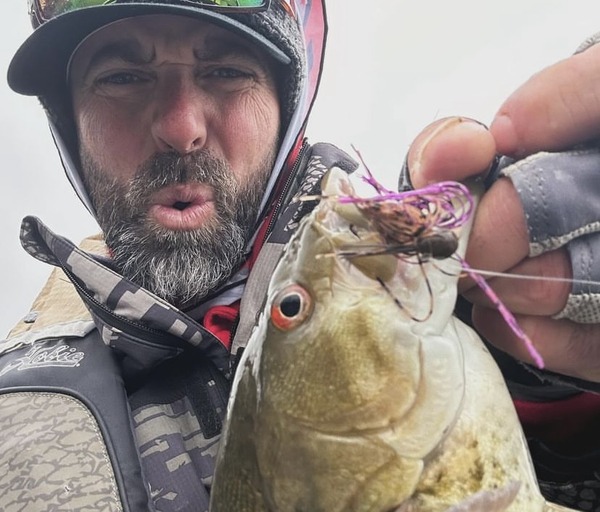
Finesse baits are the top lure category for catching smallmouth bass.
I mean, it only makes sense because they just have smaller mouths.
Smallies prefer to feed on small baitfish, crawfish, and bugs because they can’t fit much else in their mouths.
I have really found that with the right trailer, micro jigs are a perfect goby and sculpin imitation, which is always effective on smallie lakes.
Micro jigs are absolute dynamite for catching smallmouth bass.
Loading the Boat
Nothing loads the boat more than small lures. Yes, the average fish you catch on a small lure like a micro jig will be smaller.
But you will catch so, so many fish on them. So you will still catch some really big bass.
Especially in the winter or in pressured water because bass of all sizes tend to target smaller forage in those scenarios.
How to Retrieve a Micro Jig
There are three retrieval styles I use when fishing these baits. And they shouldn’t be a surprise because they are exactly the same as other bass jigs.
Drag It
This is my primary retrieval technique during the winter season. Bass are not very active, and neither are it’s forage.
Less is more in cold water. Slowly dragging the micro jig is incredibly natural and enticing.
Shake It
When the water temperature is a bit warmer, or bass are a bit more active, shaking the jig can be amazing.
Slowly raise your rod as you shake the rod tip. This will give the jig some extra sound and vibration.
Additionally, the jig will kick up some dirt or sand. The bass that are a little more active and willing to search out food will hone in on the bait and enhale it.
Hop It
Hopping the jig is more of a warm water retrieval. Especially for aggressive smallmouth in clear water.
The hopping is pretty standard for all baits that you fish on the bottom.
It is both a slow retrieval while still being able to cause reaction strikes.
Trailers for Micro Bass Jigs
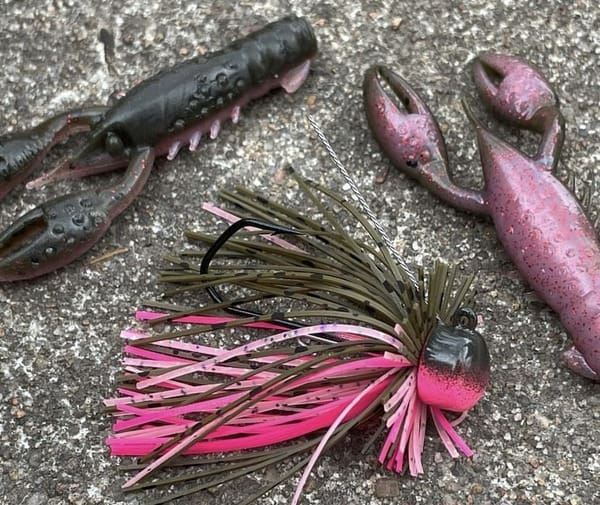
Believe it or not, it can actually be a bit difficult finding small enough trailers to properly rig up on a micro jig.
I primarily use very small crawfish baits such as the Snack craw.
But little minnow and even stick bait trailers can be awesome, and give you that true Ned rig profile.
Gear for Micro Jig Fishing
Contrary to all other jig fishing techniques, micro jig fishing is an ultra finesse technique.
You are going to need to use a spinning rod.
You can also use a BFS setup, but that isn’t ideal because the smaller spools limit your casting distance.
I like a 7′-7’3 medium heavy action spinning rod. You want a little backbone so that you can get a good hookset through the weed guard.
When it comes to line, 8-10 lb fluorocarbon is perfect. I will go up to 12 lb test in the water is a bit stained, but I prefer to keep my line in the 8-10 lb test range.
Reeling this In
Micro jigs are ultra-light finesse versions of standard bass jigs, ideal for pressured waters, winter fishing, and targeting smallmouth bass.
Their subtle presentation and secondary movement effectively entice reluctant bass.
By employing techniques like dragging, shaking, and hopping with appropriate gear, anglers can maximize their success.
Combining the best of the Ned rig and bass jig, micro jigs are a versatile and essential addition to any tackle box.


